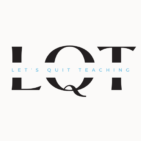It’s a new year, and like many of us, you might be thinking about how to make this one better than the last. Here’s the hard truth: if we want something to change in our classrooms, we can’t just wish it into existence. We need actionable steps, backed by research and rooted in practice.
For those of us in education, the stakes are high. Learning is the job, and it’s our responsibility to design it intentionally. So, if you’re serious about making a difference this year, here are five things you can start doing now to make real, visible change in your classroom.
1. Make Learning Visible with Clear Targets (Effect Size: 0.76)
The first step to meaningful learning is knowing exactly where you and your students are headed. Imagine starting a race with no finish line in sight. That’s what learning feels like for learners when there’s no clarity.
Create learning targets so that learners can answer these three magic questions:
-What am I learning?
-Why am I learning it?
-How will I know I’ve learned it?
Share these at the start of every lesson and revisit them throughout. Let learners see the roadmap so they’re not just wandering—they’re moving with purpose.
2. Focus on Feedback, Not Just Grades (Effect Size: 0.70)
Grades often tell learners where they stand but rarely guide them on where to go next. Feedback bridges that gap.
Make feedback actionable and timely. Instead of just “Good job” or “Try harder,” give specifics:
“Your thesis is strong, but it needs evidence from the text. Look at paragraph three for examples you could use.”
Remember, feedback is not about fixing—it’s about empowering learners to own their learning journey.
3. Shift from Passive Teaching to Active Learning (Effect Size: 0.60+)
Here’s the truth: teaching isn’t the job—learning is. The passive, sit-and-get style of teaching doesn’t work anymore (if it ever really did). We need to design lessons that actively involve learners in the process.
Instead of lecturing, try this:
-Design tasks that require collaboration, problem-solving, or creation.
-Pose open-ended questions that learners must explore and defend.
-Active learning doesn’t just engage learners; it makes them think. And when they think, they learn.
4. Build Collective Teacher Efficacy (Effect Size: 1.57)
Teaching can feel like a lonely job, but it doesn’t have to be. The single most powerful thing we can do for our learners is to work together as educators.
Join or lead a Professional Learning Community (PLC). Share strategies, analyze learner data, and discuss what’s working and what isn’t. When teachers collaborate effectively, achievement soars.
This isn’t just about checking a box for professional development. It’s about creating a culture where learning happens for both learners and teachers.
5. Design Tasks That Show Learning (Effect Size: 0.77)
Here’s a question to ask yourself: Does your classroom prioritize compliance or learning? Worksheets and rote tasks often serve compliance—they keep kids quiet and busy—but they don’t show whether learning has taken place.
Design tasks that:
-Require students to produce something: an argument, a solution, a model.
-Align directly with the learning target.
-Allow for creativity, critical thinking, and problem-solving.
Remember, a worksheet isn’t learning evidence. It’s a pacifier. Let’s stop teaching to keep order and start designing to inspire learning.
Start Today
There’s no need to wait until next week, next month, or next year to make these changes. Start small. Pick one or two of these strategies and commit to trying them out.
The new year offers us an opportunity to reflect, recalibrate, and recommit to what matters most: learning. Let’s not just hope for a better year. Let’s design one.

